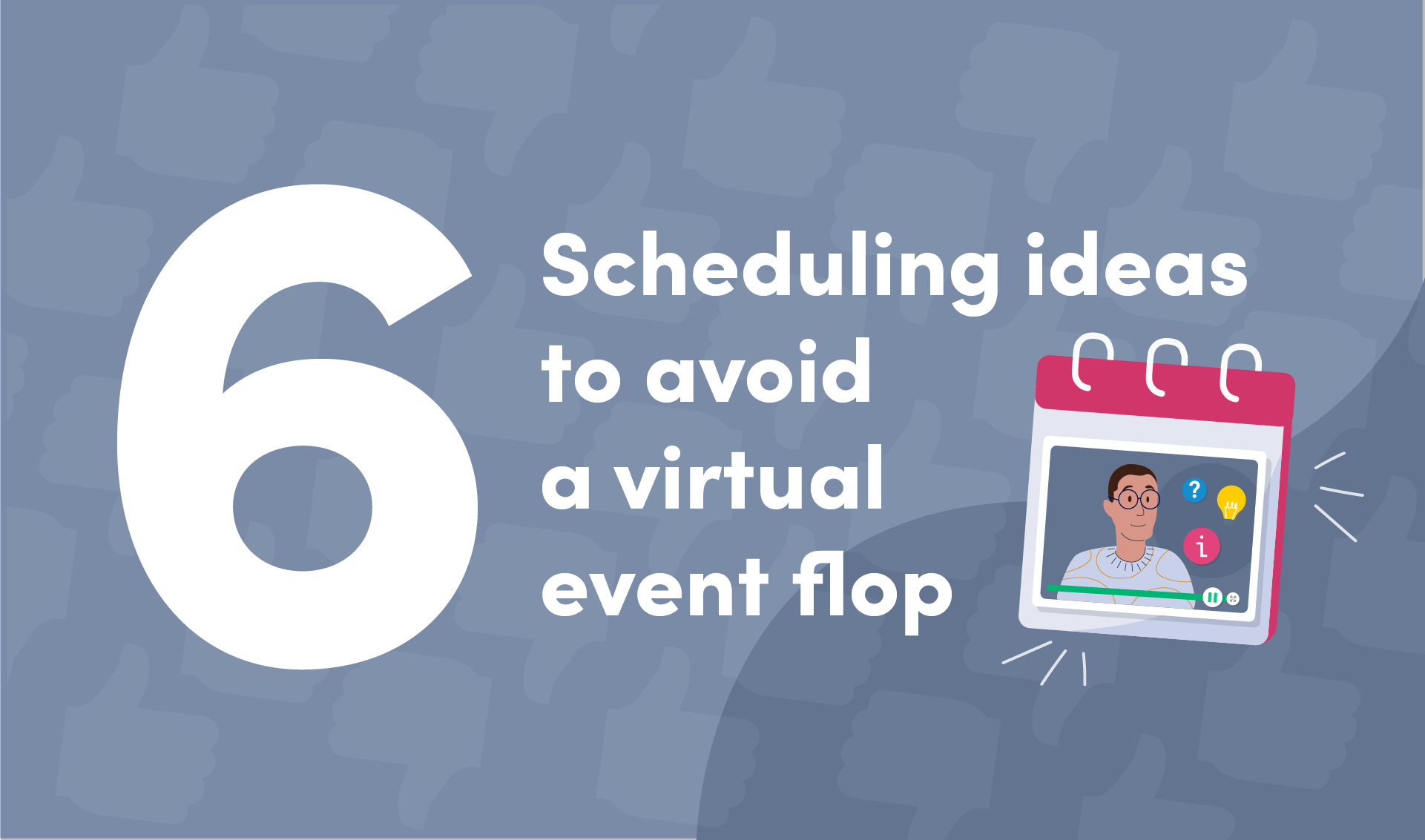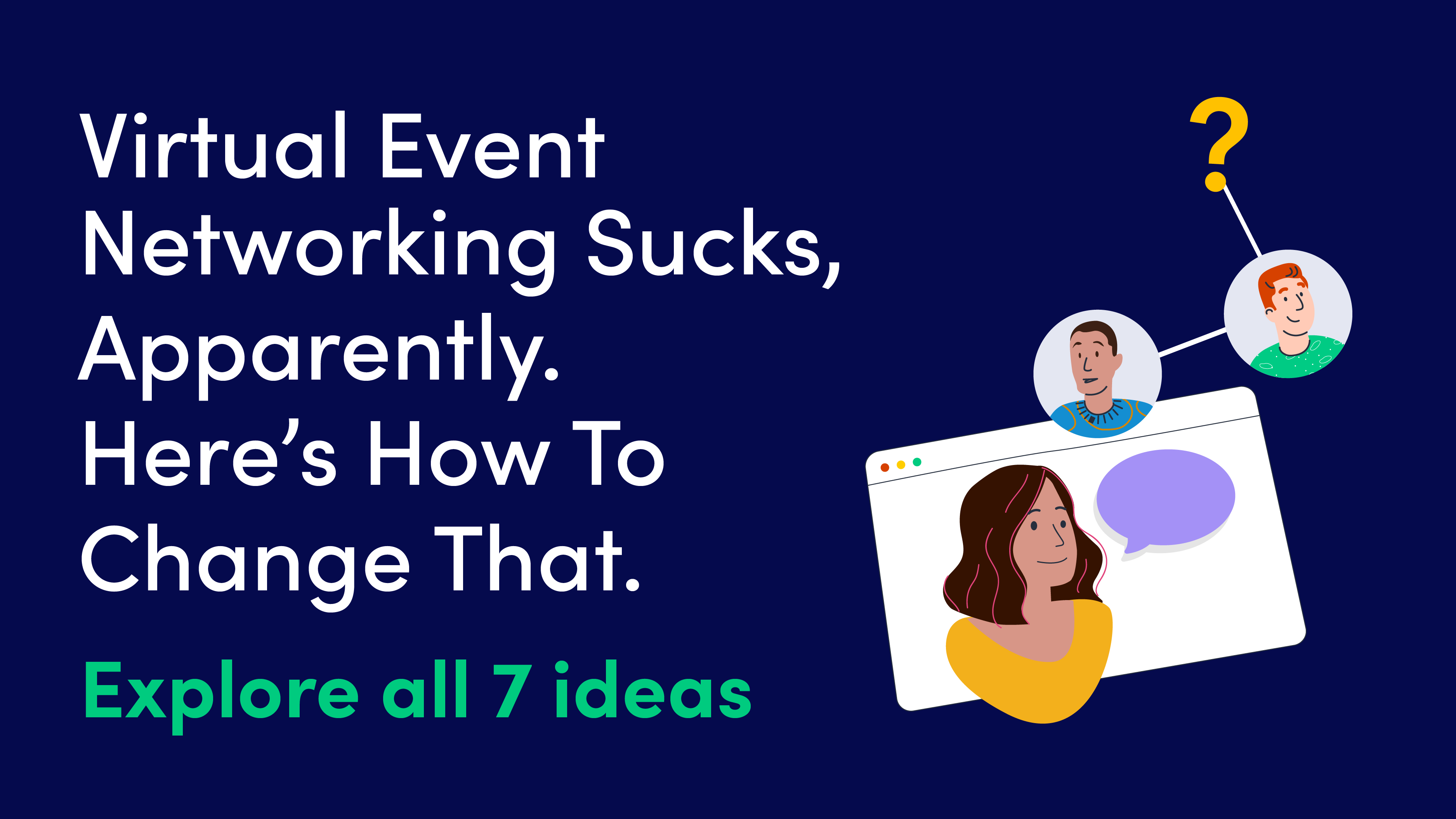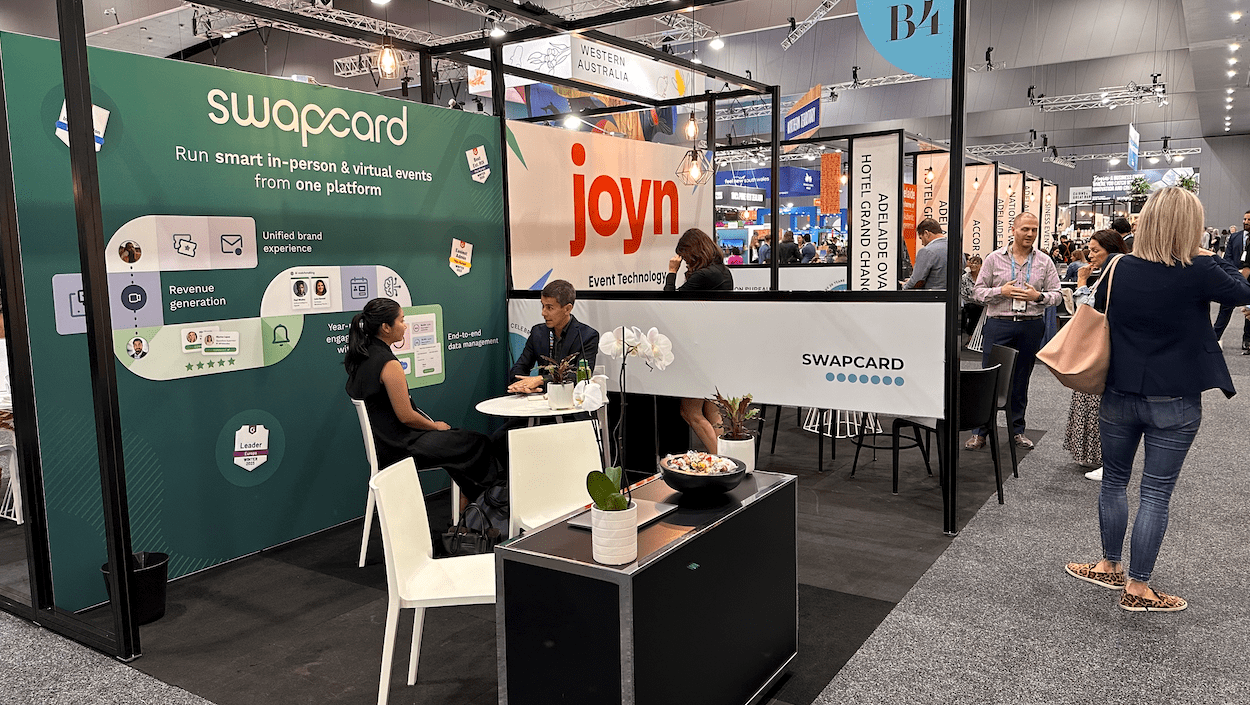Imagine planning an amazing virtual or hybrid event and pouring your heart into organizing content that you’re excited to share with your attendees.
Then, when you’re getting feedback from attendees you hear the dreaded words: it was boring. Where did you go wrong?
Here’s the problem: we can’t keep copying and pasting an in-person event format into an increasingly online world. It's not working. Event organizers are heading straight for a wall.
It’s not easy to break old habits and take uncomfortable leaps when you’re unsure whether they’ll be successful or not.
Don’t worry, we’ve got you covered.
Whether you’re running a virtual or hybrid event, these six ideas will help you rethink how you schedule the virtual aspect of your event. You’ll learn how with a few simple tweaks and some creative thinking, you can create a schedule that’ll keep your attendees engaged and coming back for more.
Even better? You’ll avoid the dreaded event flop. 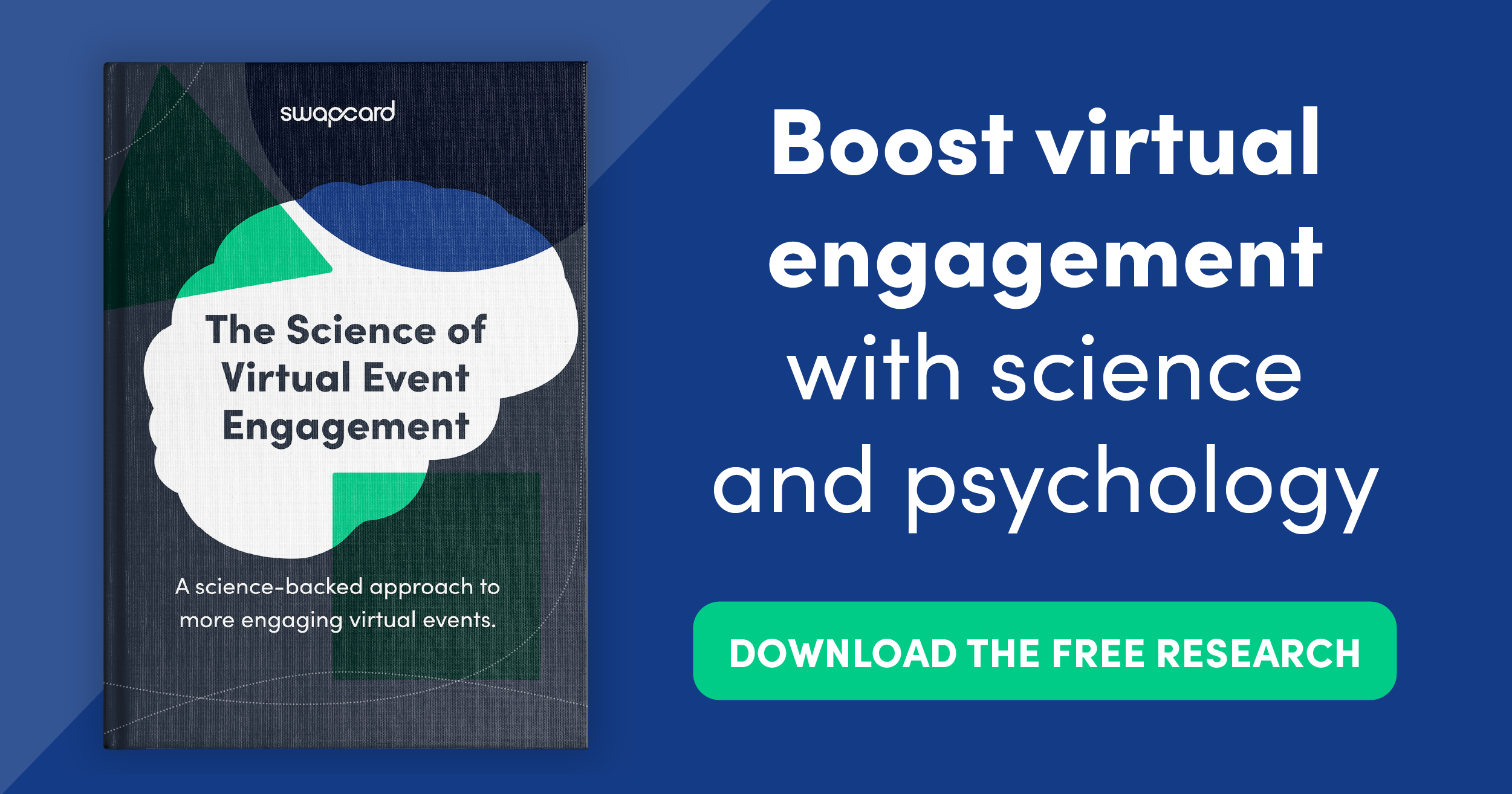
As event organizers begin to draw up their preliminary plans for an upcoming virtual or hybrid event, oftentimes the easiest option is to just copy and paste what has worked for their onsite experience. That would be a mistake.
Event organizers who simply try to recreate the onsite experience online need to be stopped before it's too late and they've lost their audiences.
Instead, event organizers need to start designing events for the specific medium and for their audience.
A virtual event that flops didn't do so because the technology sucked. It's because the event wasn't designed to be engaging in a virtual world. A hybrid event that fails probably failed because it wasn't designed to bring two audiences together across time and space.
With that in mind, let’s take a look at some ideas that have been tried and proven to work (we’ve even got some data to back them up!)
1. Design schedules that are adapted to online events
People don’t have time. They want a hyper-focused, niche schedule that answers their very specific needs and learning goals. So break up your topics and ideas. Make sure under each topic or idea, you include targeted content.
Targeted content will do the work for you of keeping your audience focused when they are joining from the comfort of their home or office. It’s incredibly easy to walk away or log off from a session when it wasn’t what you expected. So give your audience exactly what they’re looking for and they won’t be going anywhere.
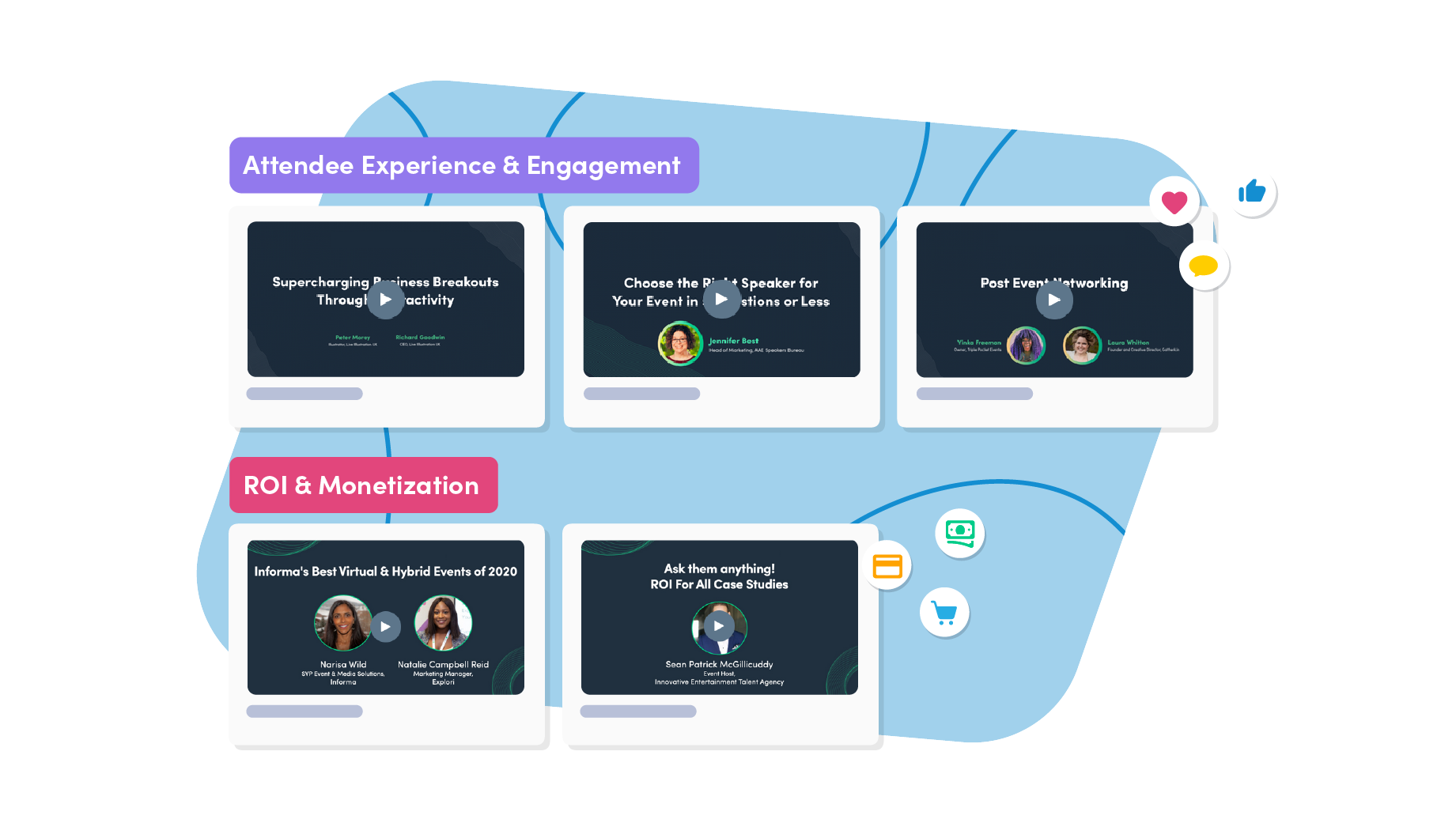
2. Short, focused offerings for rapid learning
Make sure to create short, focused offerings in your schedule. These will be aimed at engaging smaller groups of people for rapid learning. For example, 30-minute webinars every week or month on a specific sub-topic of your industry’s current challenges.
The idea is to do more with less. Identify what's trending or, if you have a mailing list, survey your potential audience to ask them what they’d like to hear about. From there, take the highest ranking topics and begin organizing a schedule with sessions and speakers that will address these points quickly and effectively.
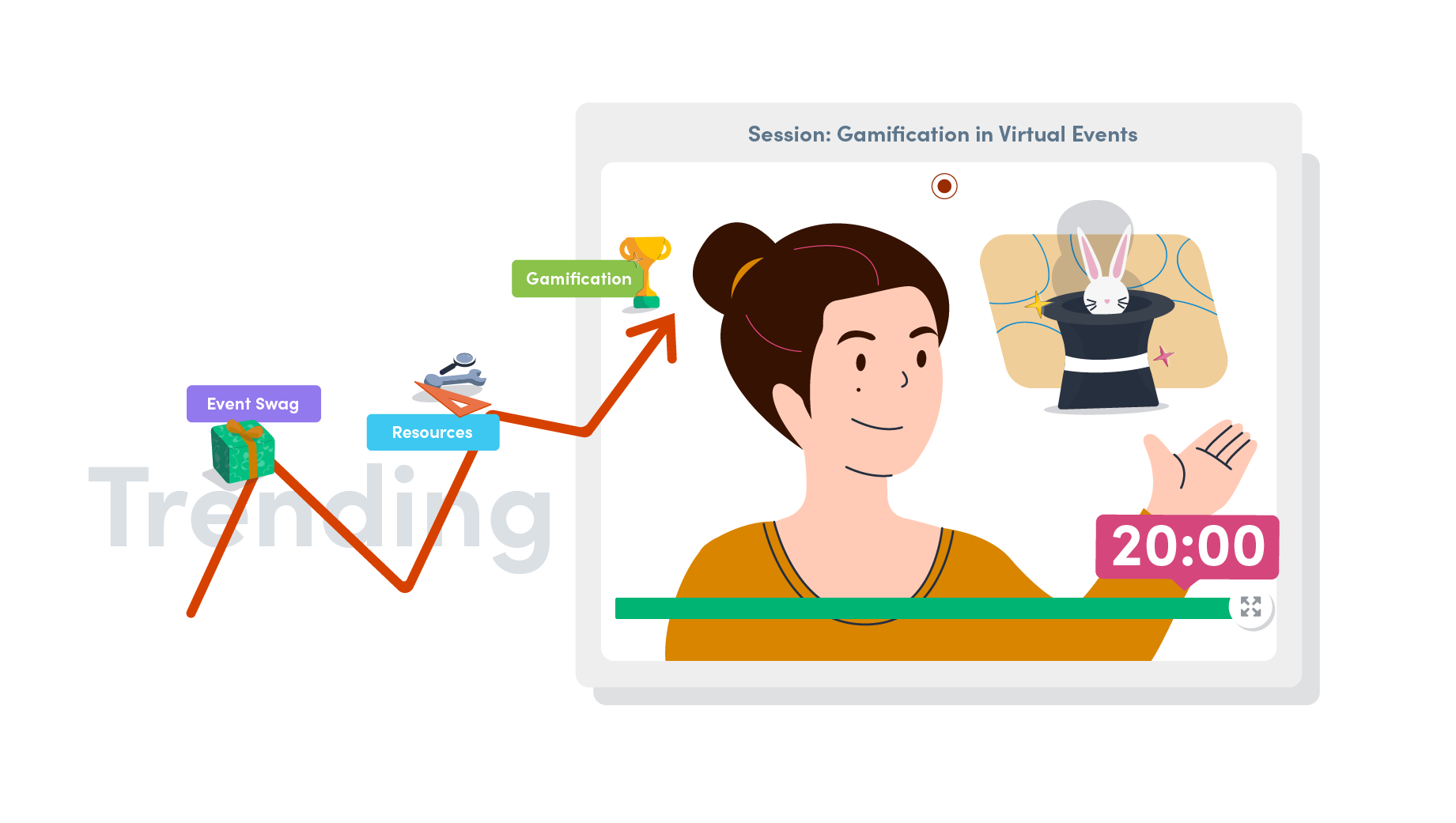
3. Get niche experts to talk and give masterclasses
The name says it all: niche experts provide insight and information that isn’t readily available. By providing your audience a unique experience with information that can’t easily be found at other events, you’ve almost guaranteed that your audience will be fully engaged.
What exactly is a masterclass? It’s essentially a class taught by someone who has expert knowledge or skill in a particular area in a small group or seminar setting. A masterclass is a great draw for individuals who would like to learn directly from someone that is a “master” in their field and who is ready to share their knowledge with an eager audience.
The more opportunities attendees have to engage directly with the expert speaker and draw on their niche knowledge, the better.
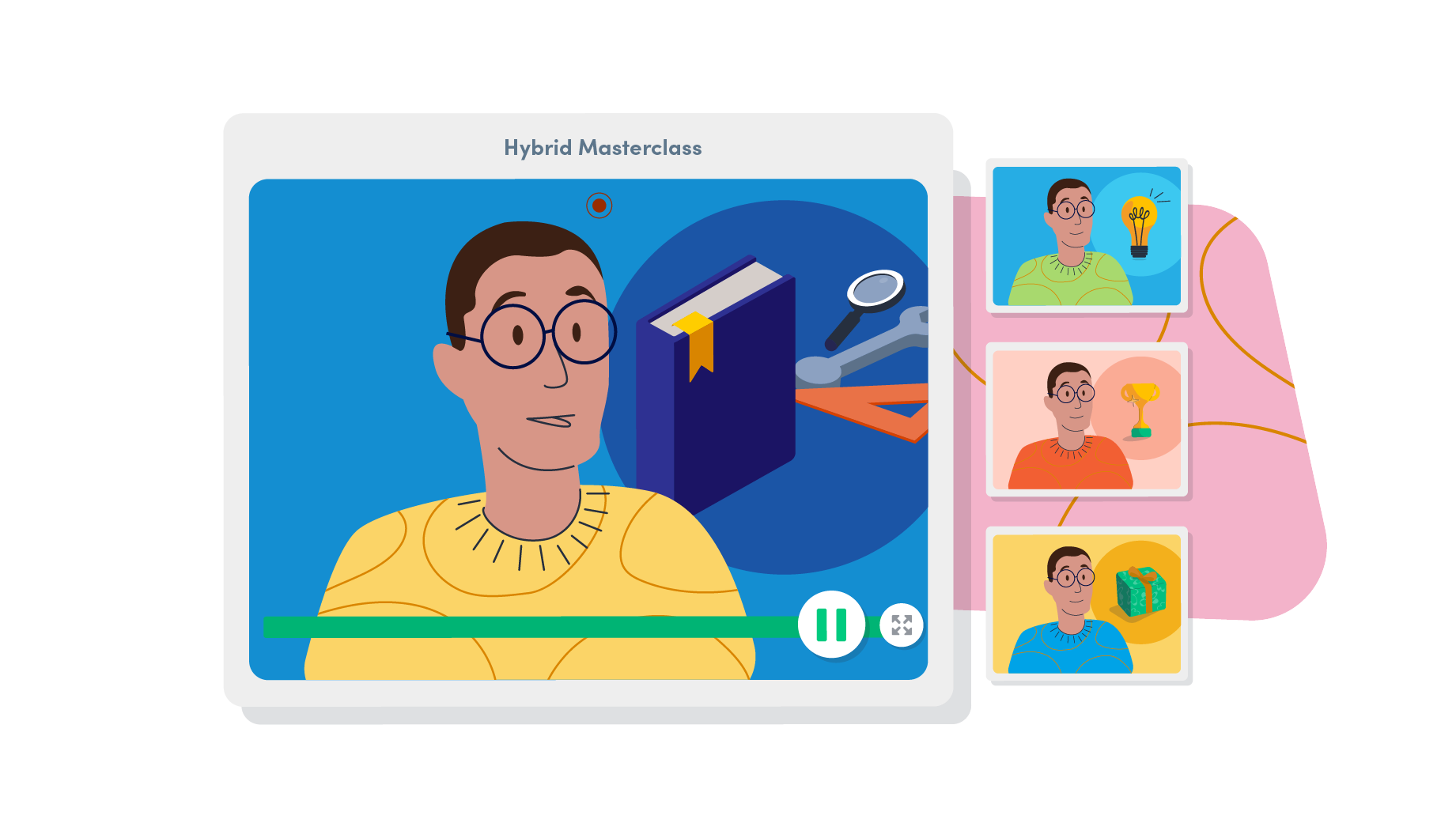
4. Provide concise content in half-day intervals
Plan half a day of solid content, followed by another half-day of networking and discussion only. Leave space for people to do both if they choose, but don’t design a schedule that requires a full day out of your audience’s week.
It’s not realistic to expect your audience to be able to put that much time aside and dedicate it to your event. Attention spans aren’t what they used to be (maybe they never were that high in the first place) and many probably want to do more with their day than just sit around and watch sessions all day. By giving your audience a choice, you’re respecting their time and making sure they can enjoy your content as they like.
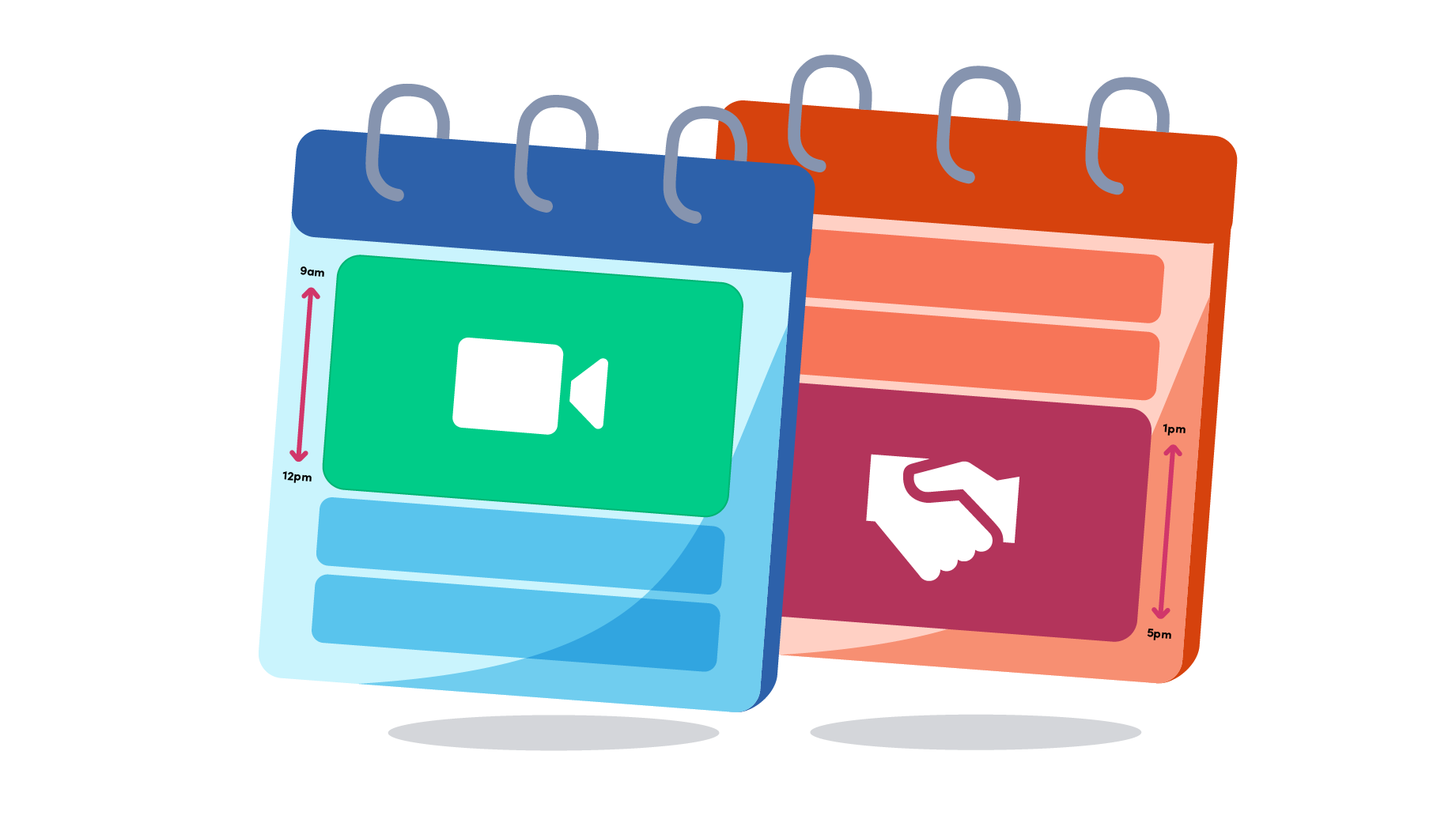
5. 20-minute sessions will keep your audience’s attention
There’s been a lot of trial and error when it comes to figuring out the best session length to maximize audience engagement and keep them interested. Original research conducted in September by Swapcard’s data squad looked at over 400 virtual events in order to gauge what the ideal session length would be to keep audiences interested and engaged. They found that audiences stayed for the duration of the session when it was between 20 - 23 minutes.
There’s nothing more disheartening than watching your session's attendance numbers drop when you’ve put all that effort into organizing your event. It’s even more demoralizing for the speakers!
Ultimately, the data is showing us that sessions should be kept short and sweet. Any longer, and you risk losing your audience’s attention.
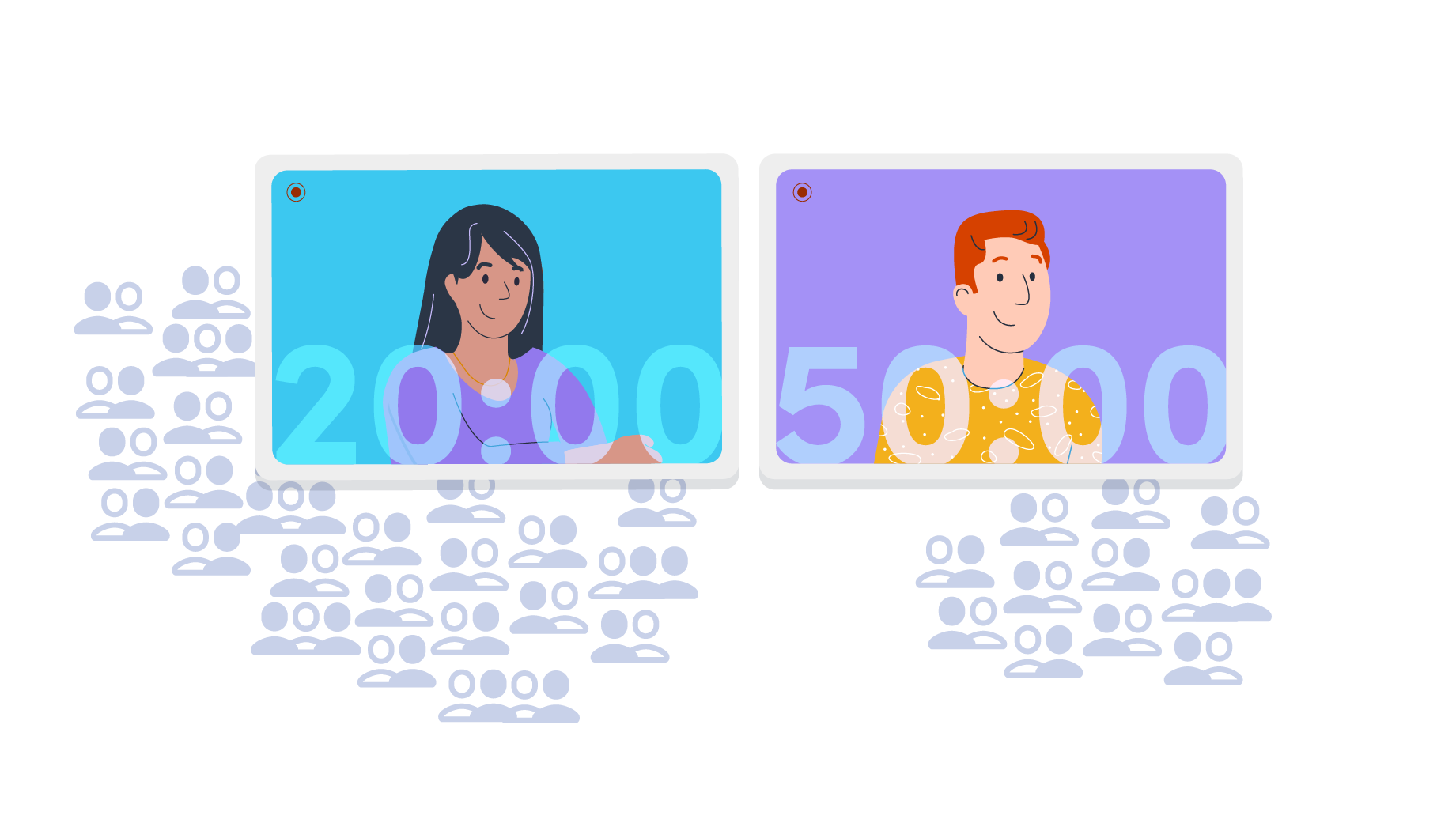
6. Give your audience a voice
Audience engagement is a major challenge at virtual or hybrid events, so put in the effort to draw your audience into the session and help them get involved. Make sure you set time in the session schedule for Q&As and polls to stimulate discussion.
Roundtable sessions are also a great option to provide your audience with the opportunity to connect with the speaker and ask their questions directly. Whatever you choose, be sure that your audience has a chance to have their voices heard and know that their contributions are not only wanted, but valued.
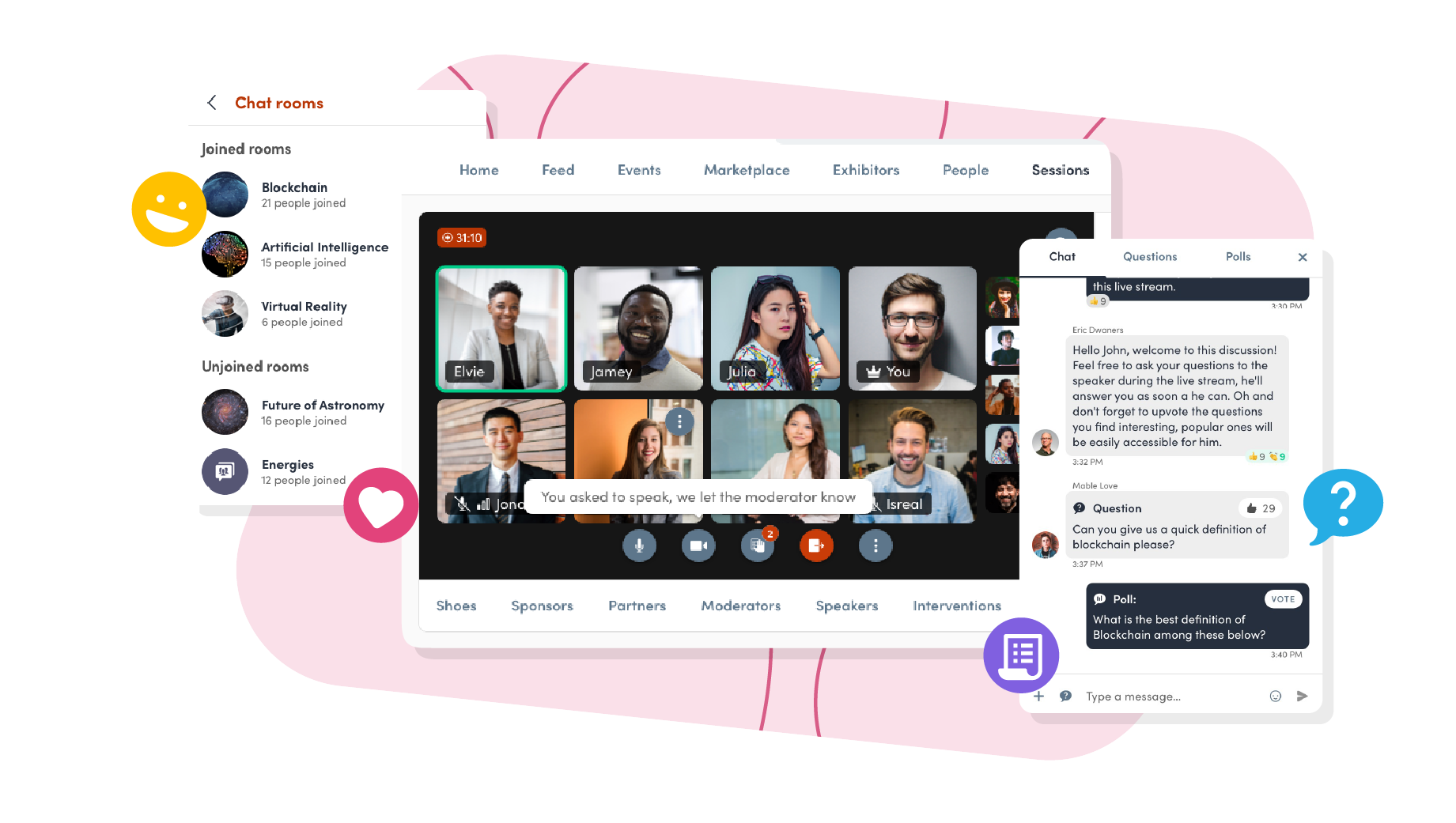
Don’t forget the importance of a good schedule!
There are important differences between the physical and virtual experience that organizers need to remember in order to schedule and run a successful event. With a large segment of your audience tuning in from somewhere other than a venue, you’re going to have to cater the content and schedule to ensure that you have their full attention.
Make sure your schedule is designed with a virtual audience in mind, keep your sessions concise, make sure you offer unique or niche content, and don’t forget to find ways to get your audience involved. With these simple adjustments, you’ll be sure to avoid the dreaded virtual event flop.
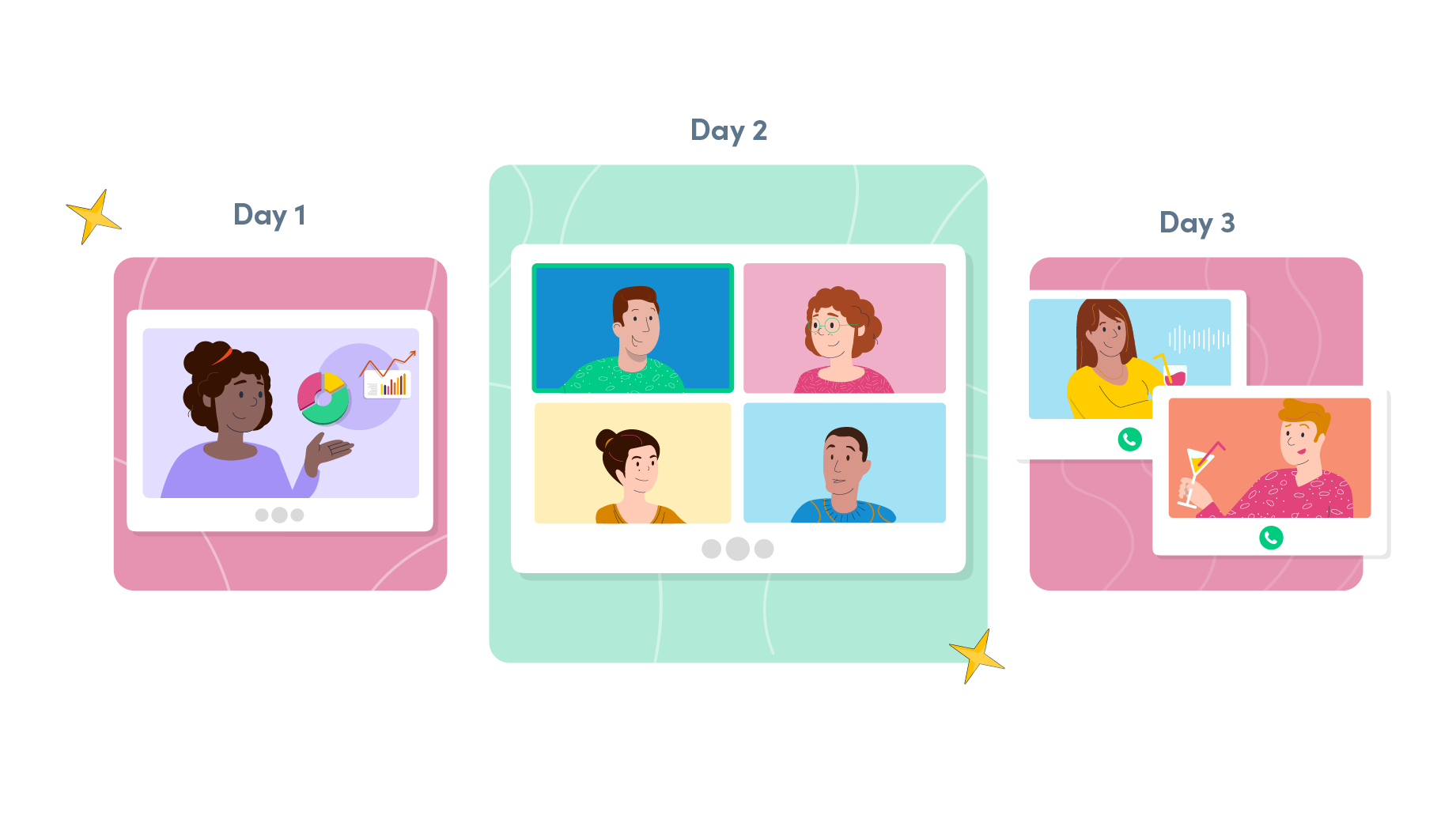
Interested in seeing how Swapcard can help you run your best virtual event yet? We'd love to hear from you.
